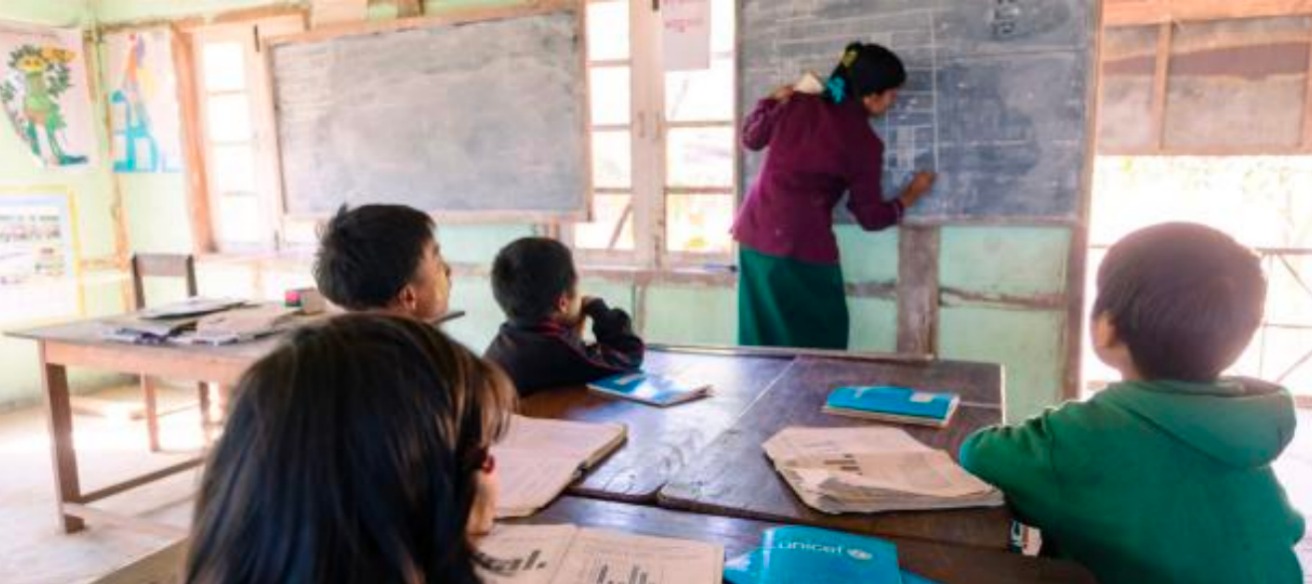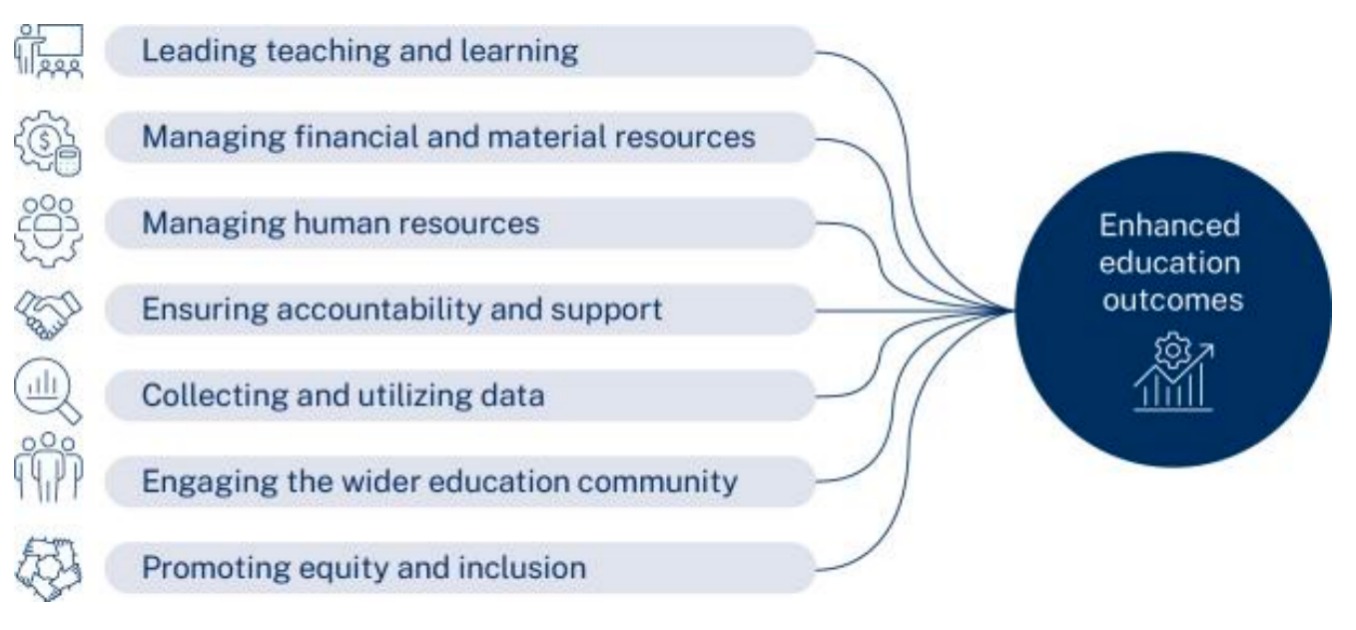A new publication shows how strengthening the “missing middle” can help education systems better meet local needs.
The anatomy of an education system is complex, comprising many levels, roles, and responsibilities. Among these, the middle or intermediate tier is gaining increasing attention for its vital role in shaping locally relevant solutions and driving sustainable changes at the school level.
As the world tackles a teaching and learning crisis, supporting teachers remains a key priority. One often overlooked but important player in this effort is the middle tier. Positioned between national and school levels, the middle tier helps connect policy and practice, ensuring that reforms are understood, adapted, and applied in classrooms.

What is the middle tier?
The middle tier – typically including district, regional, or sub-national education individuals and organizations – helps bring national policies into local schools and classrooms. In this sense, the middle tier acts as the connective tissue between central and local governments within decentralized education systems, contributing to both policy design and implementation in and across schools.
Strengthening the core of the system
A new publication developed in partnership between IIEP-UNESCO and the Learning Generation initiative, Leveraging the potential of the middle tier to improve education outcomes, puts this essential layer of the education system in the spotlight and evaluates its capacity to drive learning outcomes and support system-wide improvements.
To truly unlock the potential of education systems, education reform must stop overlooking the middle. It is time to recognize, support, and invest in the people and structures who connect vision to reality and make educational transformation possible. –Martín Benavides Director, IIEP-UNESCO
Based on a review of existing literature and country experiences, the publication makes the case that when effectively supported and empowered, the middle tier can drive equity and quality in education systems by offering instructional leadership, promoting system coherence and collaboration, and providing better teacher support and management.
Yet, in many countries, particularly in low- and middle-income contexts, this potential remains largely untapped. Many middle-tier actors work without enough resources, clear mandates, or professional recognition. Fragmentation, underinvestment, and limited support structures constrain their ability to address local challenges and innovate for better education service delivery.
The middle tier is the bridge between policy and practice, but is too often overlooked. This research brings much-needed attention to the people who turn national reforms into real change in schools and offers practical ways to strengthen their role across education systems.Amy Bellinger Director, Learning Generation Initiative
A framework for strengthening middle-tier capacity
The publication presents seven core middle-tier leadership and management functions essential to improving education outcomes.

It then introduces a proposed capacity assessment framework to reveal gaps and opportunities for improvement, outlining nine levers that impact how the middle tier performs its functions. These include clarifying roles and responsibilities, establishing attractive career incentives, maintaining a motivated workforce, enabling effective public financing, fostering a strong learning culture, and effectively using data and research evidence.
The proposed framework is the result of an ongoing collaboration between IIEP and the Organisation for Economic Co-operation and Development (OECD) on institutional capacity assessments, as part of the SDG4 Education 2030 High Level Steering Committee’s work plan (Functional Area 1). It builds on IIEP’s expertise with capacity analyses and has been tailored for middle-tier implementation, with both organizations working together to refine the framework and further develop and consolidate the research tools. The OECD has already used it in Latvia.
View the framework and nine levers for fulfilling the middle tier functions
The middle tier in action
As part of this applied research, IIEP is conducting country-level middle-tier capacity assessments. These explore staffing models, training and support systems, collaboration practices, and how middle-tier actors contribute to teaching and learning at the local level. The first assessment began in Pakistan in 2024 (forthcoming publication expected in September 2025), with plans to expand to Kyrgyzstan and other countries in 2025 and 2026.
“The middle tier is vital to improving education service delivery because they are rooted in the local context,” said Mazhar Siraj, Education Team Leader from the Foreign, Commonwealth, and Development Office (FCDO) in a recent workshop validating the research on the middle tier in Pakistan. “With the right support and policy space, they are well-positioned to innovate and implement solutions that truly work for their communities.”
This work is part of a broader initiative, The Missing Middle: Harnessing the Power of the Middle Tier for Learning, which seeks to generate actionable evidence and practical tools to better leverage the middle tier’s impact. The project is supported by partners including the Learning Generation Initiative (co-authors), the What Works Hub for Global Education, and UK International Aid.


